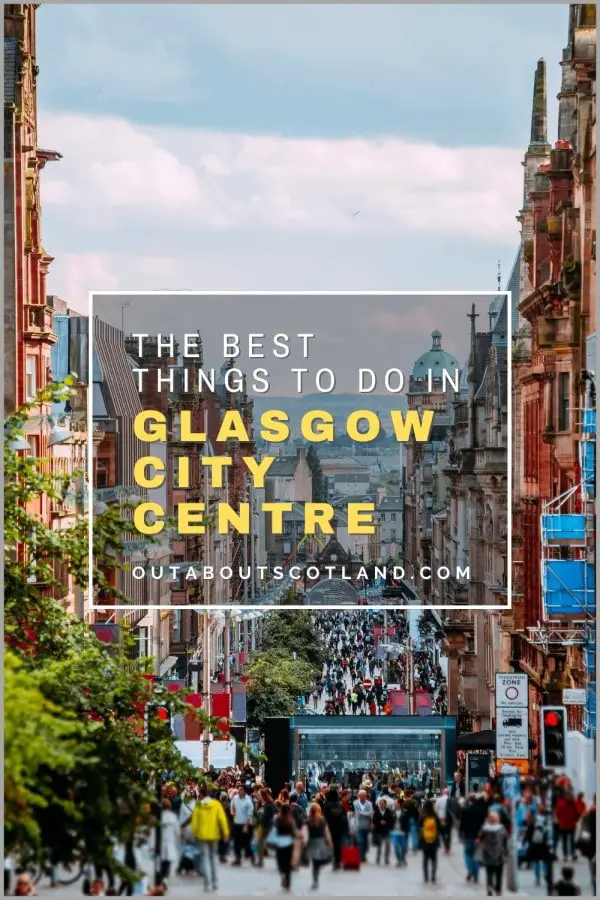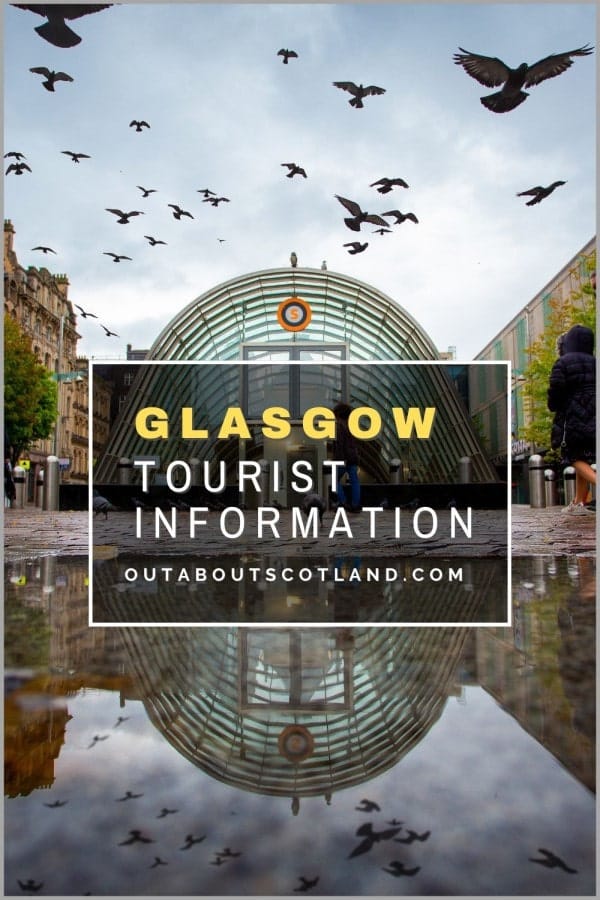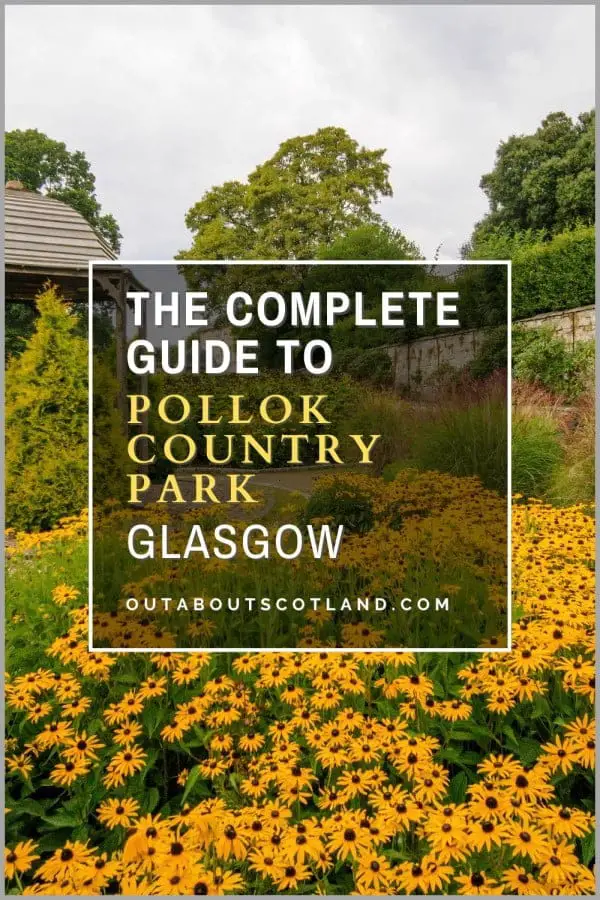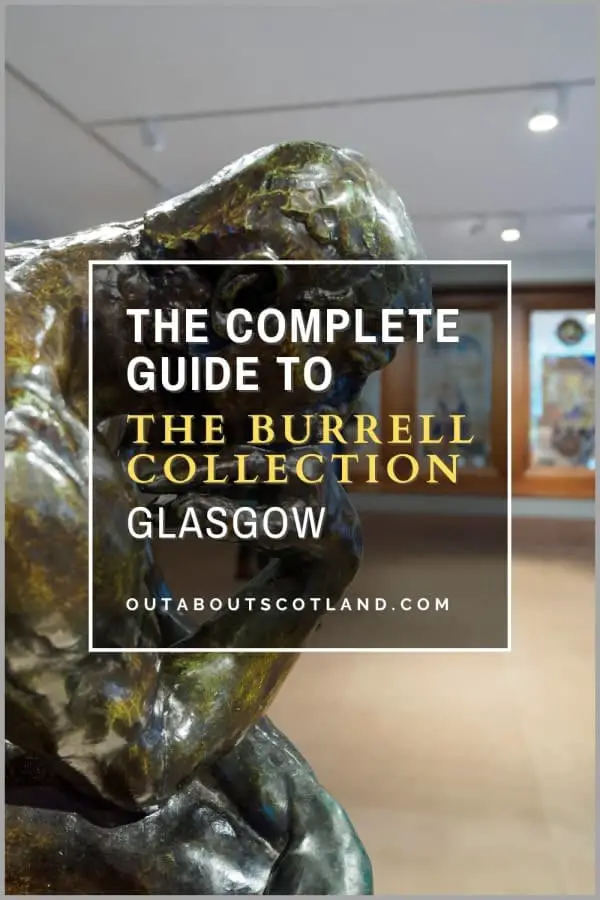The Glasgow Gallery of Modern Art (AKA the GoMA) features temporary and permanent exhibitions of Scotland’s greatest modern artworks. The gallery is located in a former mansion house in the heart of Glasgow city centre, and it’s regarded as having one of the finest collections of modern art in Scotland.
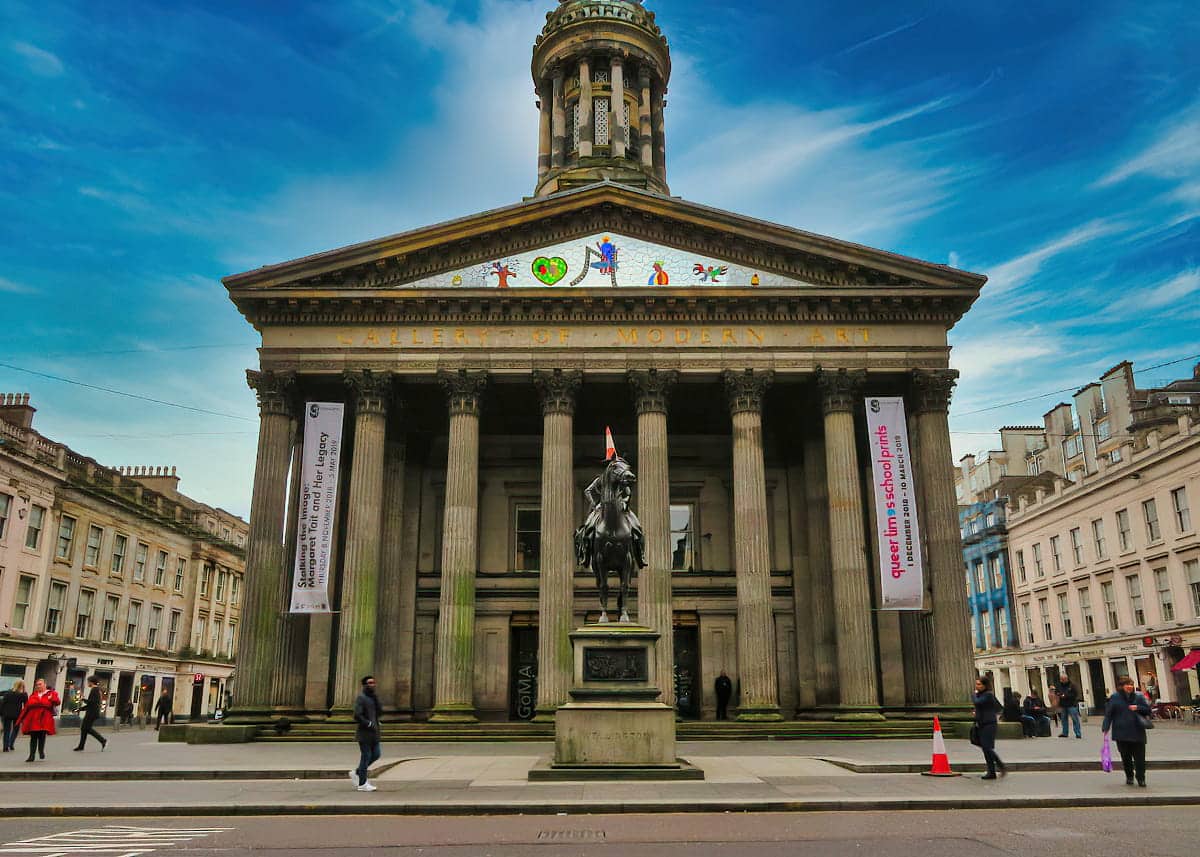
| Address: | 111 Queen Street, Royal Exchange Square, Glasgow, G1 3AH |
| Opening Hours: | Monday-Thursday, Saturday: 10 am-5 pm Friday and Sunday: 11 am-5 pm |
| Admission Price: | Free |
| Parking: | None |
| Contact: | 0141 287 3050 museums@glasgowlife.org.uk |
| Facilities: | Cafe, shop, toilets, disabled access, baby changing, cloakroom |
| Photos: | YouTube Video |
Overview
If you’ve ever done any online research about Scotland, there’s a good chance you’ll have seen one of two photos. The first is the iconic Glenfinnan Monument with the multi-arched viaduct behind it and the Jacobite steam train puffing its way across. The second is a statue of a stern-faced man on a horse in front of an ornate building, with a bright orange traffic cone perched on top of his head.
If you’ve ever wondered what it’s all about, you might be interested to know that the statue in question is the Duke of Wellington, and the building he’s standing in front of is the Gallery of Modern Art in Glasgow, otherwise known as the GoMA.
This gallery has to be one of the highlights of any visit to the city centre, and there are several reasons why you really should take the time to pop inside and take a look around this popular tourist attraction.
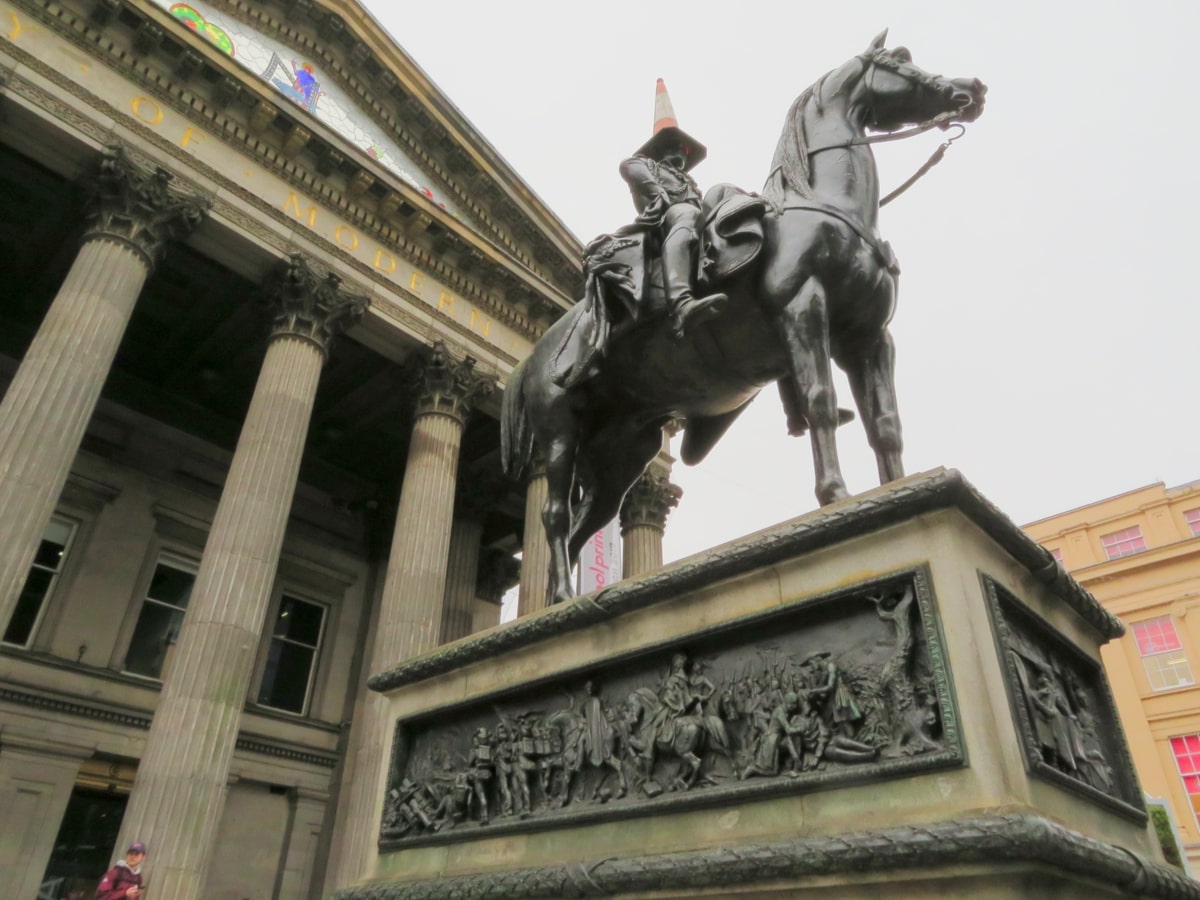
First off, it’s just a short walk from George Square, the early 19th-century principal civic square in Glasgow that offers more photo opportunities than you can shake a selfie stick at. The second reason is the fact that the gallery is free to enter, and the third is the fact that it contains some of the most highly prized works of art in Scotland.
The gallery is located inside arguably the grandest building in the city centre, and since opening in 1996, it has welcomed millions of visitors who go to see works by Andy Warhol, Margaret Tait, and David Hockney (to name a few) in a series of themed exhibitions.
In addition to being an exhibition space, the GoMA is also a learning centre for the arts thanks to regular classes and workshops for anyone wanting to unleash their inner creativity, details of which can be found at the venue.
If you’d rather just wander around and marvel at the masterpieces on display, you’re free to do so at your own pace and there’s no entrance fee, although some premium exhibitions in the gallery do have a small charge to get in. There’s also a café which is very good; a well-stocked souvenir shop; and a library.

Book Tours in Scotland
The Highlights
1: GoMA houses a superb collection of contemporary art including paintings, sculptures, prints, installations, and multimedia works. The art on display often includes both local and international artists, with a focus on social and political issues relevant to today’s society.
2: The gallery is housed in an iconic neoclassical building in Royal Exchange Square in the heart of Glasgow’s city centre, making it easily accessible and a perfect inclusion in any city sightseeing itinerary.
3: The gallery is not only a place to view art but also a centre for education and community engagement. It offers a range of educational programmes, workshops, and artist talks that cater to visitors of all ages.
Visiting Tips
1: Before you visit, take a look at the GoMA’s website or contact the gallery to find out what current exhibitions are on display. The gallery frequently rotates its exhibitions, ensuring that there’s always something new to see.
2: Entry to the Glasgow Gallery of Modern Art is free, making it an accessible cultural experience for everyone. While there is no admission fee, some special exhibitions or events may charge a ticket price so it’s worth checking in advance.
3: The gallery’s location in the city centre makes it a great starting point for exploring the surrounding area. After your visit, consider strolling through the nearby shopping centres, enjoying a meal at one of Glasgow’s many restaurants, or visiting other nearby museums and galleries.
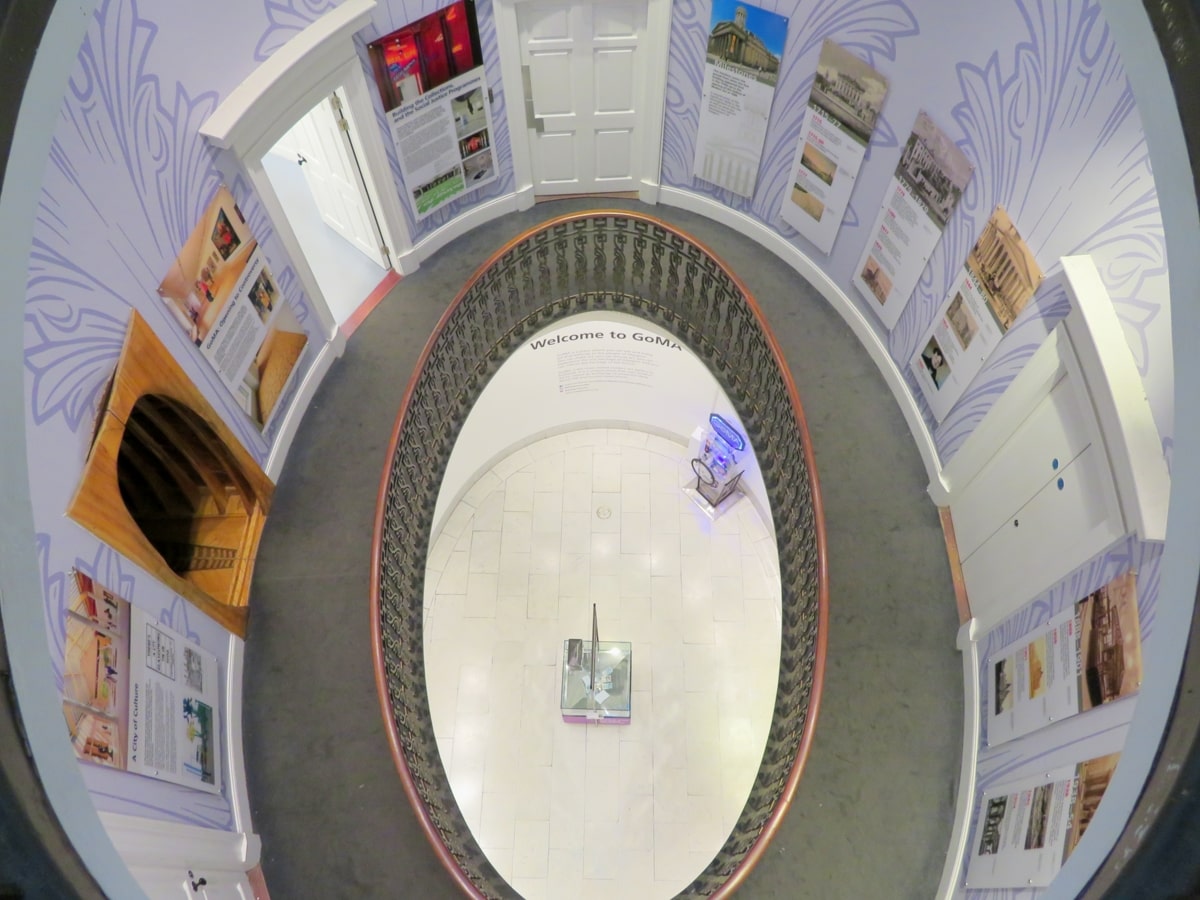
Protect Your Family From Scotland's Biting Midges
- Powerful, reliable protection for up to 8 hours
- Water- and sweat resistant
- Repels midges, mosquitoes, horse flies, sand flies, fleas and ticks
- Safe for use on adults, children over 30 months and pregnant women
- Non-sticky, moisturising with a pleasant fragrance
- Packaging may vary
Tourist Information
While this isn’t the largest gallery in the city – head to Kelvingrove for that – it’s certainly one of the most popular, and you’ll find art lovers browsing through the various galleries on each floor no matter what time of day you visit.
The GoMA is renowned for being a world-class art museum thanks to the number of priceless artworks as well as the building itself, which is one of the finest examples of neoclassical design in Europe. What was once the home of a powerful tobacco merchant is now the home of one of the finest art collections in Scotland, which displays works by both home-grown Scottish talent and international artists.
Many of the works have been chosen to highlight modern social issues so there’s always something thought-provoking to view when you visit, although admittedly, many of these works of art won’t be to everyone’s taste.
There’s more to this Glasgow attraction than paintings, though, thanks to the facilities that include a café, library, internet terminals, and multimedia panels, while the learning centre will help you brush up (no pun intended) your painting skills. They even run family sessions at the weekend so that junior artists can get involved as well.
By the way, if you were wondering why the Duke of Wellington likes to wear a traffic cone on his head, it’s basically down to the famous Glaswegian sense of humour and the fact they like to give a two-fingered salute to authority. The city council has been trying to remove the cone for the last 30 years, but they’ve now pretty much given up!
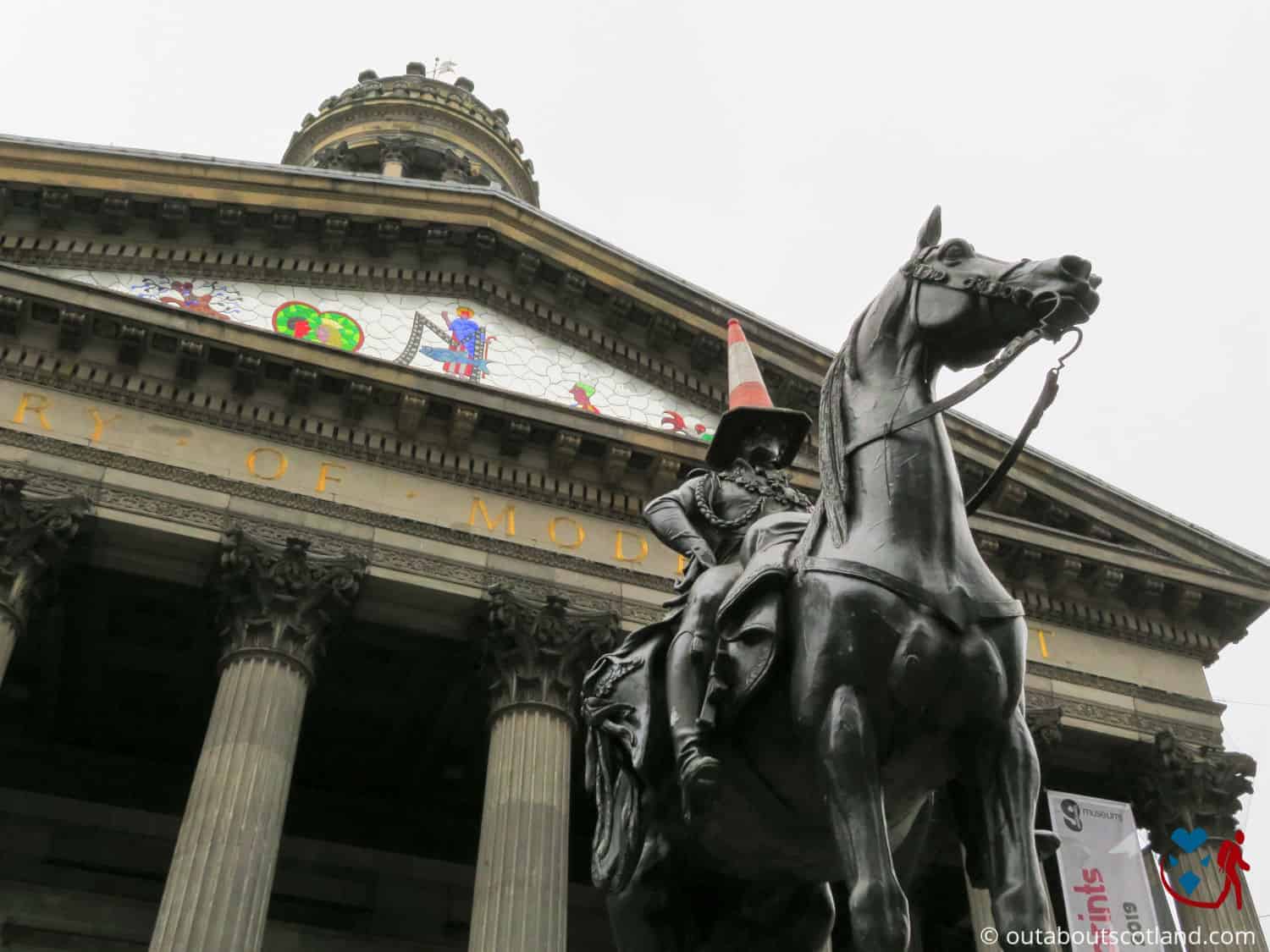
History
The original building that the GoMA is housed in was built in the city’s Royal Exchange Square in 1778 as the townhouse of wealthy tobacco merchant William Cunninghame.
Cunninghame was one of Scotland’s wealthiest people in his time, but he became a divisive figure as he made a good portion of his wealth from the slave trade between West Africa, North America, and Europe.
The townhouse was sold to the Royal Bank of Scotland in 1817 who used it as their main premises outside of Edinburgh before converting the building for use by the Royal Exchange. It was at this time in the late 1820s that the pillars were added around the outside of the building, and the exterior has remained unaltered since then.
After the merchants chose alternative ways of conducting their business, the building was yet again sold and converted for use as the Glasgow district library in the mid-1950s before being completely refurbished and converted for use as Glasgow’s modern art gallery in 1996.

Book Tours in Scotland
Things to Do
Exploring Permanent Collections: The Glasgow Gallery of Modern Art houses a vast collection of modern and contemporary artworks. Enjoy the thought-provoking works of local and international artists while delving into the themes of identity, social issues, and the human experience.
Attending Curator-led Tours: For a more in-depth understanding of the artworks, join the curator-led tours. These tours allow you to understand the thought processes behind the artists and appreciate the artworks from a new perspective.
Participating in Creative Workshops: The gallery regularly hosts workshops where visitors can tap into their creativity under the guidance of professional artists. These sessions are a fantastic opportunity to learn new techniques, understand various art forms, and even create your own masterpiece.
Enjoying Family-Friendly Activities: The gallery isn’t just for adults but also for young art enthusiasts. They organize numerous family-friendly activities including hands-on art activities like the Saturday Art Club. It’s a wonderful opportunity to introduce children to the world of art in a fun and engaging way.
Visiting Temporary Exhibitions: The Glasgow Gallery of Modern Art frequently hosts temporary exhibitions, showcasing artworks from a variety of artists and genres that provide an opportunity to experience fresh perspectives and appreciate the evolving nature of contemporary art.
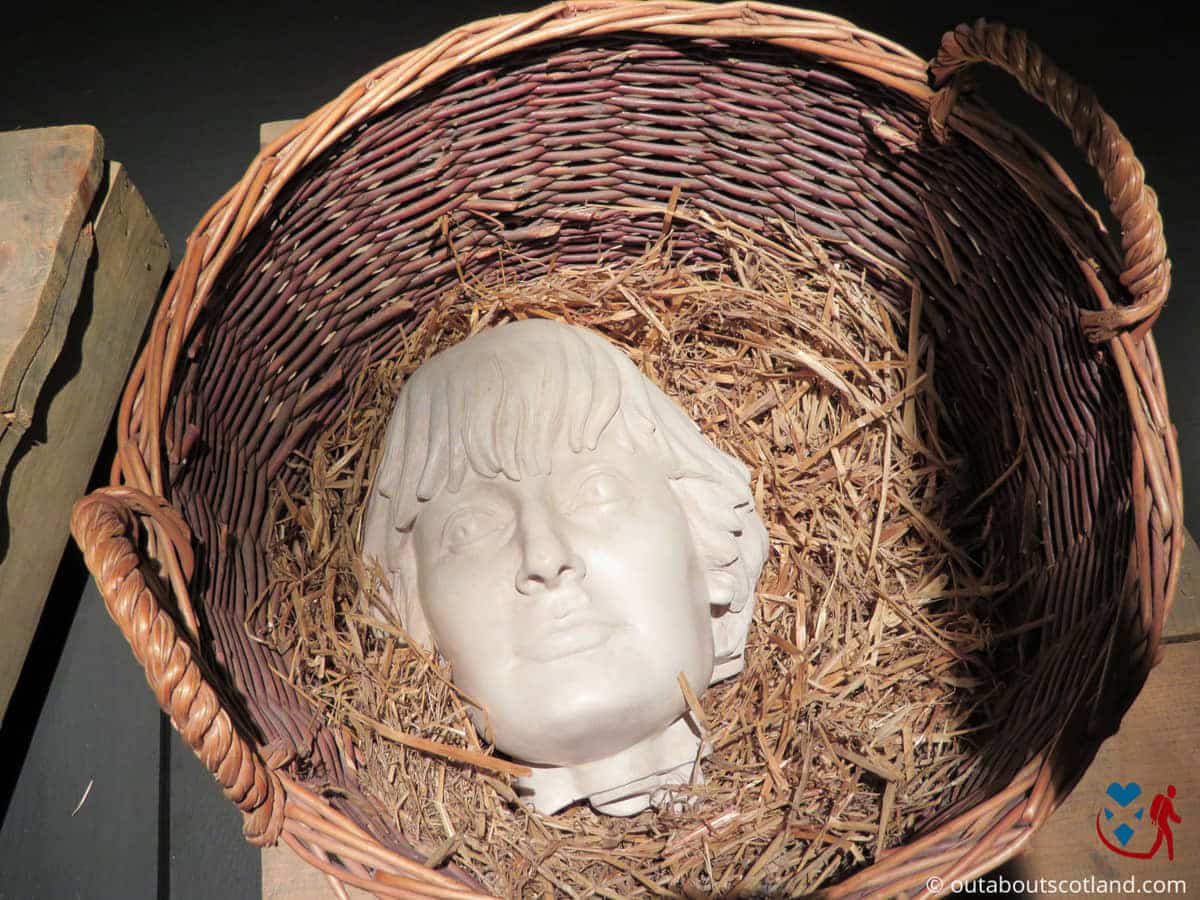
Things to Do Nearby
Glasgow Cathedral. Castle St., Glasgow, G4 0QZ. 16-minute walk.
Founded in 1197, this is one of the largest Christian buildings in Scotland. Glasgow Cathedral is notable for its underground crypt and post-war stained-glass windows. Entry is free, but donations are welcome.
The Necropolis. Castle St, Glasgow G4 0UZ. 17-minute walk.
The Necropolis is a large Victorian cemetery located behind Glasgow Cathedral. There are many footpaths winding their way around the 37-acre site and entry is completely free.
George Square. Glasgow G2 1DH. 3-minute walk.
Glasgow’s principal civic square is located in the heart of the city, next to the Grand City Chambers. This historic square was laid out in 1781 and is ringed with statues of famous Scots.
St. Mungo Museum of Religious Life. 15-minute walk.
A free-to-visit museum next to Glasgow Cathedral that displays religious artefacts and artworks from around the world. The museum has a café and gift shop on site.
The Lighthouse, 11 Mitchell Lane, Glasgow, G1 3NU. 3-minute walk.
A 7-story museum dedicated to art and design. Charles Rennie Mackintosh, a Glasgow architect, is the source of inspiration for the exhibition space. In addition to the exhibitions, there are guided tours of the building, a shop, and a café.
Protect Your Family From Scotland's Biting Midges
- Powerful, reliable protection for up to 8 hours
- Water- and sweat resistant
- Repels midges, mosquitoes, horse flies, sand flies, fleas and ticks
- Safe for use on adults, children over 30 months and pregnant women
- Non-sticky, moisturising with a pleasant fragrance
- Packaging may vary
Frequently Asked Questions
What is the name of the square that the Gallery of Modern Art is situated on in Glasgow?
The Glasgow Gallery of Modern Art, or GoMA, is located in Royal Exchange Square. The postcode is G1 3AH.
Who owns the Gallery of Modern Art?
Glasgow City Council is the GoMA’s owner. The gallery attracts over half a million visitors annually.
When did the Glasgow Gallery of Modern Art open?
The Glasgow Gallery of Modern Art opened in 1996. The building was originally built in 1778 as the townhouse of tobacco trader William Cunninghame.
Does the Glasgow Gallery of Modern Art have a cafe?
Yes, the Gallery of Modern Art (GoMA) in Glasgow does have a café. The café is located on the ground floor of the gallery, and it offers a range of refreshments, including hot and cold drinks, snacks, and light meals. The café also provides free Wi-Fi for visitors, making it a comfortable space for those who want to spend some time working or studying.




